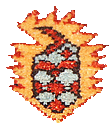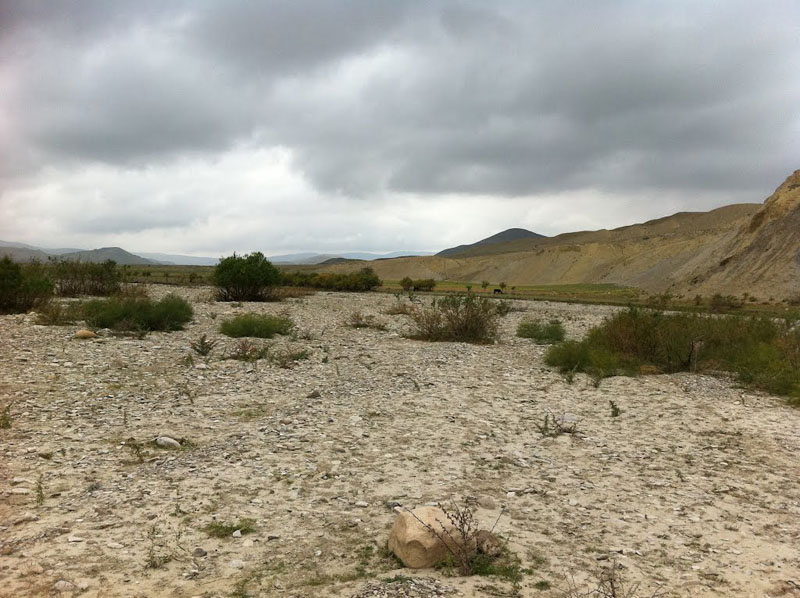
|
Shirvan Marasali Prayer
rug with the flaming boteh elements and samovar motifs / Samovarlı Şirvan
xalçası
CODE: SHRMRSN15 Size (metric): 133x156cm Size (ft): 4'4"x5'1" Area: 2.07 m2 Density: 170 000 knots per square meter, totally ~350 000 knots Weaving period: three months Colors (12): madder red, yellow, goldenrod, obergine, midnight blue (woad), navy blue, variegated green, Persian blue, natural ivory sheep wool (undyed), natural dark brown (undyed). Dyes: 100% natural dyes: madder, weld (Reseda Luteola), indigo, pomegranate skins, walnut husks, natural brown sheep wool, natural ivory sheep wool Materials: Handcarded and handspun wool for pile, ivory wool warps and ivory wefts (two shots) Ends: four rows of decorative knotted meshwork Weaver's name: Zarifa Handwoven in Azerbaijan, dated 1437 (2016) Design: The indigo field with diagonal rows of polychrome serrated boteh, the indigo mihrab arch above with an ivory keel arch of angular vine scattered with minor motifs around rows of polychrome boteh, inner reciprocal skittle-pattern stripe, in an ivory border of stylised boteh and samovar motif between indigo flowerhead stripes. dated 1436 (2016) Some references state that samovars were first created in Russia, but a fairly recent archeological discovery in Azerbaijan would suggest otherwise. Ancient tribes in the area apparently used a samovar-like vessel to heat water for their meals. Archeologist Tufan Akhundov, who unearthed one such pottery-shaped samovar in Shaki, a city located in the foothills of the Caucasus about five hours northwest of Baku, believes this archeological find to be the oldest samovar ever unearthed - possibly up to 3,600 years old. Read more at http://www.azer.com/aiweb/categories/magazine/83_folder/83_articles/83_samovar.html |
.jpg) .jpg) Ancient samovar found in Sheki, Azerbaijan   |
Contact us for more information about this rug
.jpg) .jpg) .jpg) .jpg) .jpg) Samovar - a metal urn, often of brass, with a spigot near its base, widely used to boil water for tea. In traditional samovars water is heated by means of a vertical tube, containing burning charcoal, running up the middle of the urn. A filled teapot is set atop the chimney to steep. A lighter brew can be obtained by adding more water to the teacup from the spigot. Traditionally, a samovar was used for all household needs that required hot water, and almost all families possessed one.  An antique brass samovar |
|
Buta/Boteh has been used in Iran, Central Asia and Caucasus since the Sassanid Dynasty (AD 224 to AD 651). Some design scholars believe the Boteh is the convergence of a stylized floral spray and a cypress tree: a Zoroastrian symbol of life and eternity. A floral motif called Buteh, which originated in the Sassanid Dynasty (200–650 AD) of Iran and later in the Safavid Dynasty (from 1501 to 1736), was a major textile pattern in Iran and Caucasus during the Qajar Dynasty. In these periods, the pattern was used to decorate royal regalia, crowns,
and court garments, as well as textiles used by the general population.
According to Azerbaijani historians, the design comes from ancient times of
Zoroastrianism and is an expression of the essence of that religion. It
subsequently became a decorative element widely used in Azerbaijani culture
and architecture. The usage of the pattern goes beyond clothing – paintings, jewelry, frescoes, curtains, tablecloths, quilts, carpets, garden landscaping, and pottery also sport the buta design in Azerbaijan, Iran and Central Asia. Buta/Boteh is also one of the most important ornamental motifs of Mughal Indian art, consisting of a floral spray with stylized leaves and flowers. It is used in architecture and painting and in textiles, enamels, and almost all other decorative arts. The motif began to gain importance in the reign of the Mughal emperor Jahangir (1605–27).
Coptic silk textiles depicting floral and boteh motifs were found in Akhmim, (a city in Upper Egypt. Referred to by the ancient Greeks as Khemmis, Chemmis and Panopolis, it is located on the east bank of the Nile). 5-7 centuries AD. Published at " Lyon Musée Historique des tissues Soieries Sassanides, Coptes et Byzantines V – XI siècles". According to the book, the boteh motif derives from the lotus leaf.
Here is a decoration of applied-leather plant motif on a leather flask from the Pazyryk tombs, Altai Mountains` (5th century BC). Hermitage Museum”. This is perhaps the earliest decoration which can be connected to the boteh motif.
In short, boteh/buta element may have different meanings in the different cultures: Zoroastrian flame, shrub, Scythian decorative motif, a bird, flower, cypress tree etc. |
||
|
  |
.jpg)
Contact us for more information about this rug

|
For more information about the above rug or to place an order please email vd@azerbaijanrugs.com (Baku, Azerbaijan) or ra@azerbaijanrugs.com (San Francisco Bay Area). We will get back to you within 24 hours or less. |